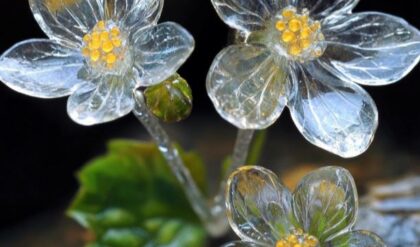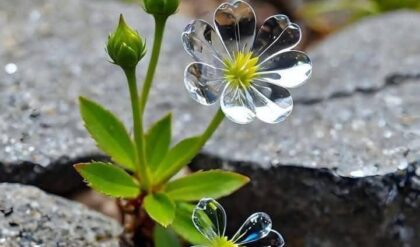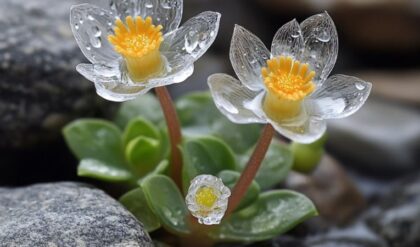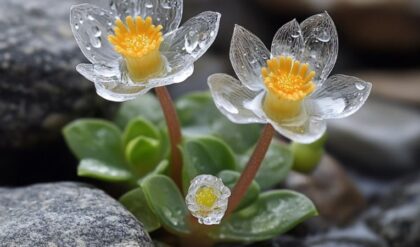The hosta, with its lush foliage and striking variations in color, has captivated gardeners and landscape enthusiasts alike. Often celebrated as one of the stars of the shade garden, this perennial goes beyond mere ornamentation; it embodies adaptability and grace, harmonizing effortlessly with various outdoor aesthetics. Hostas thrive in partial to full shade, making them ideal for those challenging corners of the garden that struggle to receive ample sunlight. Their captivating leaves exhibit a kaleidoscope of colors—from vibrant greens to soothing blues and silvery hues—each variety bringing a unique character to your green spaces. In planting and cultivating these enchanting plants, one must consider factors like soil type, moisture, and exposure to pests, detailed extensively in resources designed for both novice and experienced gardeners.
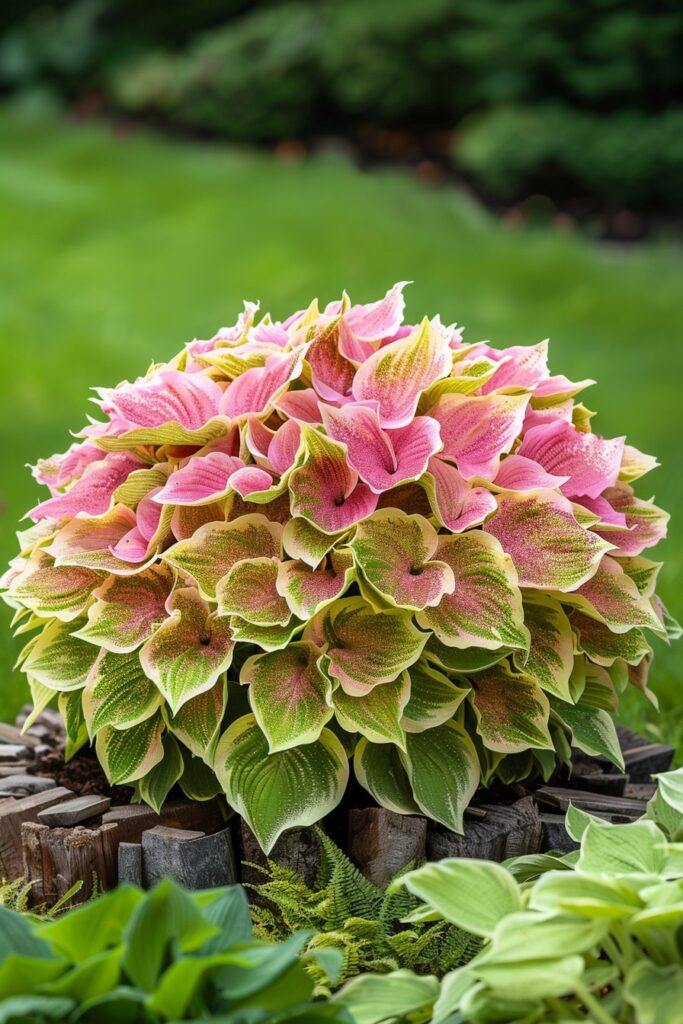
Understanding Hosta Varieties
Hostas come in many cultivars, each offering a distinctive charm. For instance, the blue hosta—not just a plant but a statement—adds ethereal beauty to shaded gardens. Imagining a bustling landscape design incorporating these varieties is exciting; a gradient of leaf colors could evoke an atmosphere similar to an artist’s palette, offering seasonal changes that bring continual delight throughout the growing months.
Exploring the Diversity of Hosta Cultivars
Hostas come in a wide range of cultivars, each with its own unique characteristics. From the majestic ‘Empress Wu’ with its massive leaves to the delicate ‘Halcyon’ with its stunning blue-green hues, the diversity of hosta varieties is truly captivating. Gardeners can explore different leaf shapes, textures, and growth habits to create visually striking compositions in their shade gardens.
Selecting the Right Hosta for Your Garden
When choosing hostas for your garden, it’s essential to consider factors like mature size, sun exposure, and growing conditions. Some varieties thrive in full shade, while others may prefer partial sun. Understanding the specific needs of each cultivar can help you make informed decisions and ensure their long-term success in your landscape.
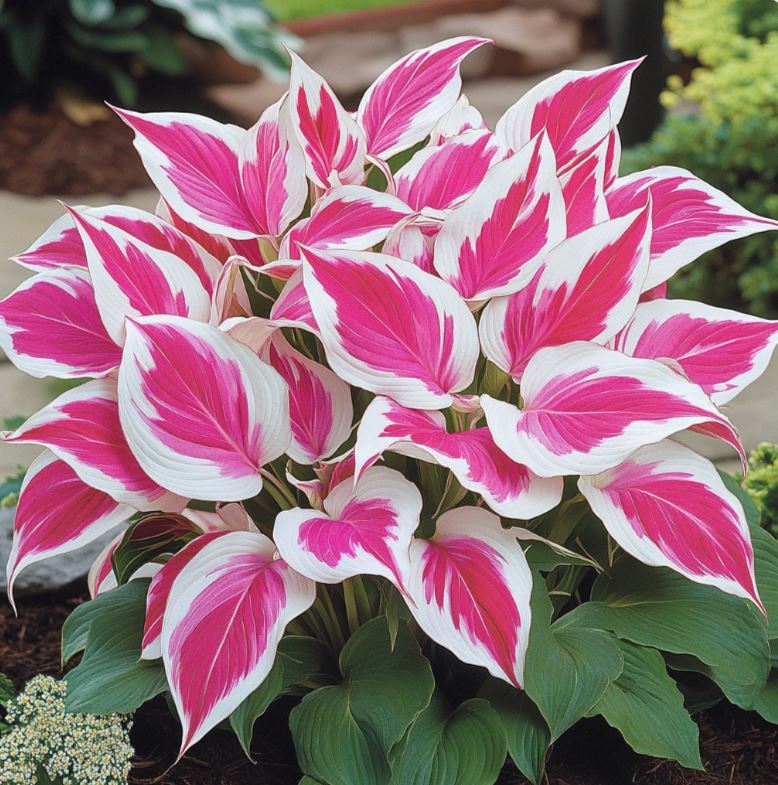
Combining Hosta Varieties for Visual Impact
Pairing different hosta cultivars can create stunning visual effects in the garden. Contrasting leaf shapes, such as the broad, rounded leaves of the ‘Sum and Substance’ with the narrow, lance-shaped foliage of the ‘Patriot,’ can add depth and interest to your planting design. Experimenting with color combinations, such as the vibrant greens of the ‘Jade Cascade’ and the silvery-blue tones of the ‘Frances Williams,’ can result in breathtaking displays.
Discovering Unique Hosta Cultivars
Beyond the classic green and blue-hued varieties, the hosta world offers a wealth of intriguing cultivars. The ‘Fire and Ice’ hosta, with its striking variegated leaves, or the ‘Pandora’s Box’ with its miniature size, can add unexpected elements to your garden. Exploring these unique offerings can inspire creative landscape designs and satisfy the curiosity of avid hosta enthusiasts.
Care Guidelines
To fully unlock the potential of hostas, knowledge of their care requirements is critical. Essential practices include proper watering techniques to ensure the ideal balance—enough moisture without creating soggy conditions that could lead to root rot. Fertilization during the spring can give an added boost, while conscientious pest monitoring can prevent common afflictions such as slugs and snails from damaging your prized plants.
Watering Strategies for Healthy Hostas
Proper watering is crucial for the well-being of hostas. They prefer consistently moist, but not waterlogged, soil. Established plants can tolerate periods of drought, but newly planted hostas will benefit from regular watering to ensure their roots become well-established. Avoid overhead irrigation, as wet foliage can lead to fungal issues, and instead, focus on directly watering the soil around the plants.
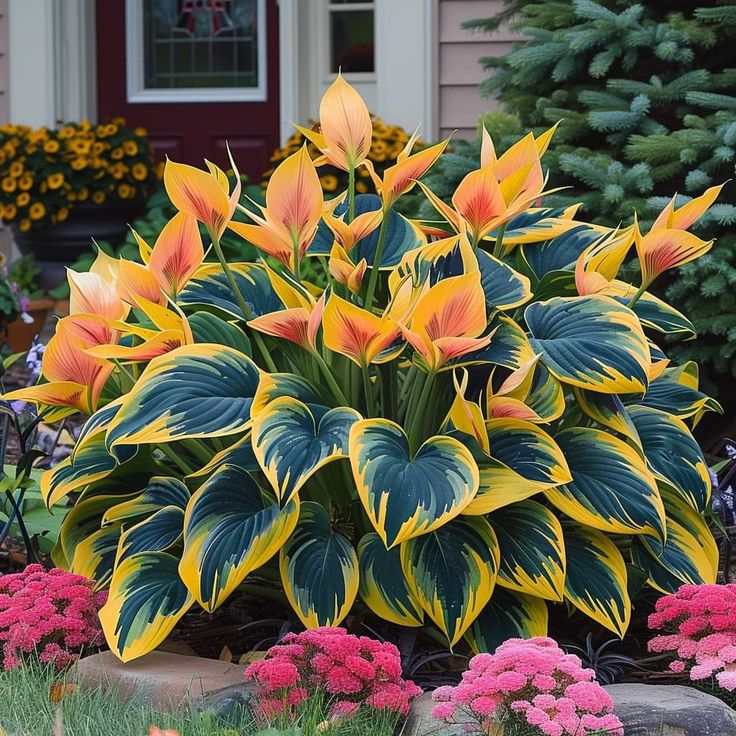
Fertilizing Hostas for Optimal Growth
Hostas respond well to fertilization, especially during the spring when they are actively growing. Using a balanced, slow-release fertilizer can provide a steady supply of nutrients to support lush foliage development and vibrant colors. Avoid over-fertilizing, as this can lead to excessive growth and compromise the plant’s overall health.
Combating Pest Threats to Hostas
Hostas can be vulnerable to various pests, such as slugs, snails, and deer. Implementing a proactive pest management strategy is essential to protect your plants. This may include using physical barriers, such as copper tape or diatomaceous earth, as well as applying organic pest control solutions judiciously. Monitoring your plants regularly and addressing any infestations promptly can help ensure the long-term success of your hosta collection.
Integrating Hostas into Harmonious Garden Designs
The thoughtful placement of hostas among other perennials creates visual continuity; pairing different leaf shapes and textures can provide an artistic layer that turns a simple garden into a living canvas. Experimenting with companion plants that thrive in similar growing conditions, such as ferns or woodland wildflowers, can enhance the overall aesthetic appeal of your hosta-centric garden.
Unleashing Their Hidden Potential
Interestingly, the use of hostas can extend beyond aesthetics. Depending on the cultivar, some hostas are edible—a fact not widely recognized in culinary circles. This opens avenues for hybrid gardening that combines beauty and utility, where stunning landscapes may also yield fresh flavors for creative kitchen endeavors.
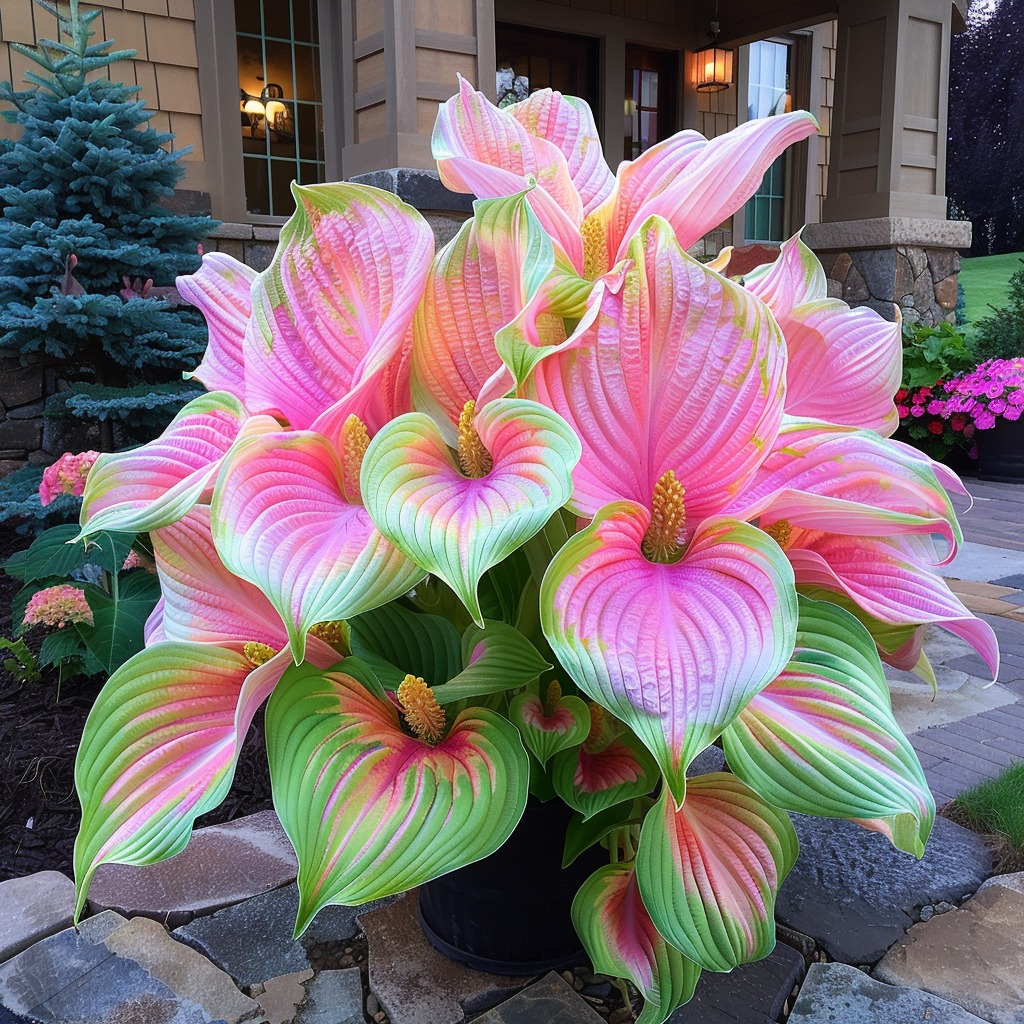
Exploring the Edible Potential of Hostas
While not all hosta varieties are edible, some cultivars can be enjoyed as leafy greens or even as a delicacy in certain culinary traditions. The young leaves and unfurling shoots of specific hosta plants can be harvested and incorporated into salads, stir-fries, or as a garnish, adding a unique flavor profile to your dishes. Researching the edible potential of your hosta collection can unlock a whole new world of gardening and culinary exploration.
Combining Beauty and Utility in the Garden
Imagine a lush garden bed where guests can enjoy shade under the ornamental hostas while nibbling on their tender young leaves or flowers—an experience that transcends traditional expectations of garden value. This hybrid approach to gardening, where aesthetics and functionality coexist, can elevate the overall experience and appreciation of your outdoor space.
Fostering a Deeper Connection with Nature
The dual purpose of hostas, as both ornamental and edible plants, can foster a deeper connection with the natural world. Cultivating and consuming your own homegrown produce, even if it’s from an unexpected source like hostas, can instill a sense of self-sufficiency and appreciation for the bounty of the earth. This holistic approach to gardening can enrich both the physical and the emotional well-being of the gardener.
The Psychological Impact of Hostas
Gardeners have long understood the therapeutic qualities of gardening, but the specific inclusion of hostas carries an additional psychological benefit. The serenity elicited by the tranquil hues and soft textures of hosta foliage fosters a calming environment, providing a sanctuary amidst life’s chaos. Observing these plants’ slow yet deliberate growth patterns can instill mindfulness and patience—a gentle reminder of nature’s rhythms and our interconnectedness with it.
Fostering Mindfulness and Relaxation with Hostas
The gentle presence of hostas in the garden can have a profound impact on one’s mental and emotional well-being. The soothing colors and soft, undulating leaves can promote a sense of calm and tranquility, inviting visitors to slow down and immerse themselves in the present moment. This mindful engagement with the natural world can be a powerful antidote to the stresses of modern life, offering a restorative respite.
Cultivating Patience and Appreciation through Hosta Observation
Watching the gradual unfolding of hosta growth can be a meditative experience, instilling a sense of patience and appreciation for the rhythms of nature. As the leaves emerge and mature, gardeners are reminded of the importance of slowing down and savoring the small, incremental changes that unfold over time. This awareness can translate into a greater appreciation for the natural world and a deeper understanding of one’s own place within it.
The Therapeutic Benefits of Hosta Gardening
The act of gardening with hostas can have a profoundly therapeutic effect, both physically and mentally. The gentle, repetitive motions involved in tending to these plants can be soothing and calming, while the visual beauty and tactile engagement can stimulate the senses and promote a sense of well-being. For many gardeners, the hosta-filled garden becomes a sanctuary, a space where they can find solace, rejuvenation, and a deeper connection to the natural world.
Community Engagement
Moreover, joining communities focused on hosta appreciation, like horticultural societies, can enhance personal connection to the craft. These organizations often curate libraries filled with extensive knowledge about hostas that serve as invaluable resources for anyone keen to deepen their gardening vocabulary. Engaging with fellow enthusiasts can nurture a deeper understanding of cultivation techniques and styles, fostering new friendships rooted in common interests.
Exploring Hosta Societies and Their Resources
Hosta societies and clubs offer a wealth of knowledge and support for both novice and experienced gardeners. These communities often maintain comprehensive libraries, host educational workshops, and organize plant exchanges, providing a wealth of resources for hosta enthusiasts to delve into. Connecting with fellow hosta aficionados can open up new avenues for learning, sharing best practices, and expanding one’s horticultural horizons.
Cultivating Meaningful Connections through Hosta Appreciation
Joining a hosta-focused community can be a transformative experience, fostering meaningful connections and a shared sense of purpose. Through collaborative gardening projects, plant swaps, and social events, hosta enthusiasts can find a supportive network of like-minded individuals with whom to explore their passion. These connections can lead to lasting friendships, the exchange of valuable knowledge, and a deeper appreciation for the art of hosta cultivation.
Hosta Societies as Hubs of Inspiration and Innovation
Hosta societies often serve as hubs of innovation and inspiration, driving the evolution of hosta cultivation and landscape design. These communities may spearhead the development of new cultivars, share cutting-edge techniques, and showcase stunning garden installations that push the boundaries of what is possible with these versatile plants. Engaging with these forward-thinking groups can ignite the imaginations of gardeners, inspiring them to experiment and elevate their own hosta-centric creations.
Conclusion
The enchantment of hostas lies not only in their aesthetic contributions but also in the myriad possibilities they present—both in the garden and beyond. Through care guidance, cultivation strategies, and mindful engagement, gardeners can unveil the full richness of these exquisite plants. As you delve into the world of hostas, remember that the interaction between plant care and personal wellness can be as rewarding as the breathtaking gardens built around them.
